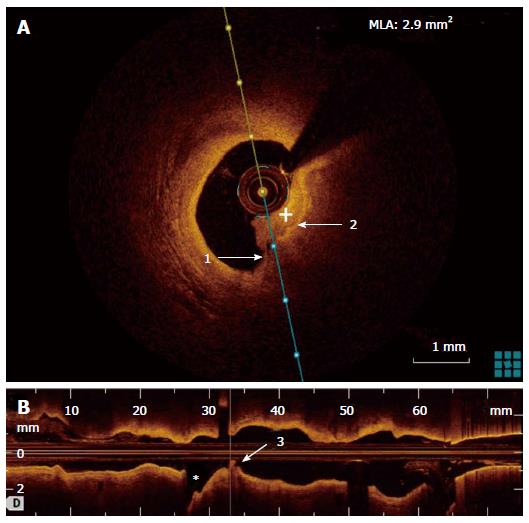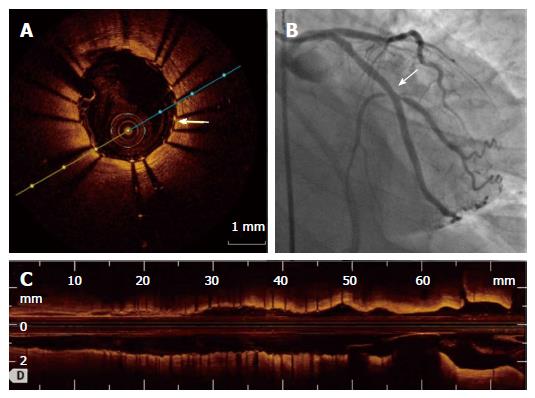Copyright
©The Author(s) 2017.
Figure 1 Angiography images at presentation.
A, B: First angiogram. Arrows show a 50% lesion on the left circumflex artery with a TIMI grade 3 flow in the RAO/caudal view (A) and LAO/caudal view (B). After documentation of transmural ischemia and recurrence of the arrhythmic storm, the second angiogram revealed the same non-occlusive and intermediate lesion highlighted by the arrow in RAO/caudal view (C). RAO: Right anterior oblique; LAO: Left anterior oblique.
Figure 2 Optical coherence tomography performed during the repeated angiogram.
A: OCT showing cross-section lumen reconstruction at the level of the plaque rupture. An intraluminal non-occlusive thrombus (+) is visualized. Arrow 1 shows rupture thin-cap fibroatheroma as visualized by the loss of continuity of the normal intima show by Arrow 2; B: OCT longitudinal lumen reconstruction at the mid left circumflex artery level. Arrow 3 highlights both plaque rupture and intraluminal thrombus be just before the bifurcation with the first marginal (asterisk). OCT: Optical coherence tomography.
Figure 3 Angiogram and optical coherence tomography images after percutaneous coronary intervention.
A, C: OCT confirming stent expansion and apposition in the cross-sectional (A) and longitudinal (C) lumen reconstruction. Arrow in A highlights good strut apposition to the vessel wall and B is final angiogram. The arrow in B highlights the level of the previous stenosis and the percutaneous coronary intervention success. OCT: Optical coherence tomography.
- Citation: Couture EL, Bérubé S, Daneault B. Optical coherence tomography to identify the cause of an arrhythmic storm: A case report. World J Cardiol 2017; 9(1): 71-75
- URL: https://www.wjgnet.com/1949-8462/full/v9/i1/71.htm
- DOI: https://dx.doi.org/10.4330/wjc.v9.i1.71











